Video of the Week:
Flowerbed Design
Fruit:
Fruit Trees and Frost
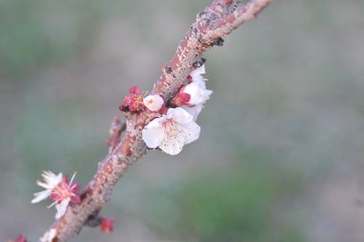
Apricots are more likely to have frost kill flowers than peaches because they bloom a bit earlier. Though there are late-blooming apricot varieties, the differences between full bloom on early-and late-blooming varieties appears to be slight. Research at Virginia Tech in the 90's showed a maximum of a 4-day difference between early and late varieties. However, in some years that may be all that is needed. The trees in the study that were considered late blooming included Hungarian Rose, Tilton and Harlayne. Harglow was not included in the study but is also considered late-blooming. See https://pubs.ext.vt.edu/422/422-761/422-761.html for more info.
Peaches are next on the list for being likely to be caught by a late frost. With peaches, two characteristics become important when considering whether they will be damaged by late frosts. Like apricots, bloom time is very important but fruit bud hardiness is also important. In this case, fruit bud hardiness refers to hardiness to late frosts rather than the ability to survive extreme low temperatures during the winter. Late bloomers included ‘China Pearl’, ‘Encore’, ‘Intrepid’, and ‘Risingstar.’ See http://aces.nmsu.edu/pubs/research/horticulture/RR782.pdf. The ‘Intrepid’ cultivar also has shown excellent cold hardiness when in flower. See http://www.google.com/patents/USPP12357.
So, are there other considerations when looking at possible frost damage? Location can be very important. Planting on a hill which allows cold air to drain to lower elevations can help. Also, a location in town will be more likely to have a warmer micro-climate than an exposed location. Some gardeners will add a heat source under a tree during cold nights if they are close to a building. Heat lamps and charcoal briquettes are sometimes used but safety should be the first consideration. (Ward Upham)
Ornamentals:
Start Trees off Right
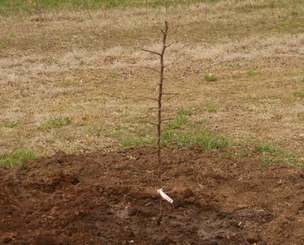
1. Bare soil maintained with herbicides.
2. Area under tree mulched 3 inches deep.
3. Tall fescue allowed to grow under tree.
4. Bermudagrass allowed to grow under tree.
5. Kentucky bluegrass allowed to grow under tree.
All treatments were applied to Eastern redbud seedlings as well as to pecan seedlings. All trees were fertilized according to recommendations and watered during the growing season with up to1 inch of water if rainfall was deficient. At the end of two years, trees were measured and harvested. Data was taken on caliper (diameter) 6 inches above the ground, weight of aboveground portions of the tree, leaf area, and leaf weight. There were no differences in any measure between the mulched treatment and the bare soil treatment for either tree species. All measures showed significant growth increases if lawn grasses were controlled around the tree.
Results include the following:
1. Caliper: Caliper measures 6 inches above the soil surface were twice as large for plots without grass than for those with either fescue or bluegrass, but only 50% larger when compared to the bermudagrass plots.
2. Top growth weight: Redbuds showed a 300% weight advantage for plots with grasses controlled than those without. Pecans showed a significant 200% increase.
3. Leaf area and leaf weight: Leaf areas were 200% larger in plots without grass competition and leaf weight showed a 300% increase.
The obvious conclusion from this study is that grasses must be controlled under a newly transplanted tree to get the best possible growth. Though there were no differences in growth whether mulch was used or not, you may still wish to mulch for aesthetic reasons or to help control weed growth. How far from the trunk should the grasses be controlled? Try a minimum of 3 feet. (Ward Upham)
Miscellaneous:
All-America Selection Winners for 2015
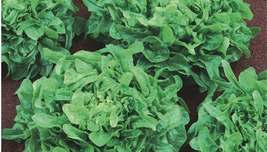
Lettuce Sandy
The first AAS winning lettuce since 1985, Sandy is an attractive oakleaf type lettuce with a multitude of sweet tasting frilly dark green leaves. Not just pretty and tasty, Sandy has exceptional disease resistance, especially to powdery mildew and is slow to bolt. Use Sandy as cut and come again baby leaf, or grow to full maturity for loose salad heads. The uniformly mounded loose heads are well adapted to both raised beds and containers. When planted with cool season flowers, Sandy will add an abundance of interesting texture to patio containers. Sandy is the second AAS Winner that is available as organic seed. Can be planted in patio containers with cool season edible flowers to enjoy. Typically not bitter when heat-stressed.
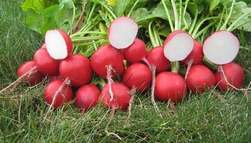
Roxanne is a hybrid radish with uniform bright red color and a beautiful creamy white interior. Roxanne is a great tasting radish with no pithiness or bleeding even at a larger size. This radish stays firm and solid even when oversized, and holds well in the garden. Roxanne grows well in a wide range of climates, as verified by our judges who have trial grounds all over North America. In mild climates Roxanne can be sown at intervals in fall and winter for harvest during these seasons. This radish can easily be grown in a pot at least 4 inches deep. A very pretty and tasty radish! Nice bright red color with beautiful creamy white interior. Nice shape, size and uniformity.
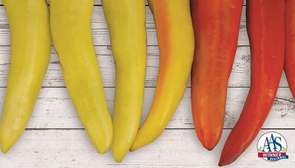
Sweet Sunset is a compact banana pepper that is vigorous and sets a large amount of concentrated fruit. This high yielding X3R variety produces attractive colorful tasty peppers that are great fresh or canned. The compact upright plants do not require staking and can be grown in a container. This high-yielding plant produces early, often and late into the season. Judges commented on the good eating quality and Sweet Sunset won the taste test in one trial site open house!
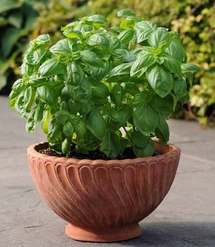
If there was an AAS category for an edible plant with ornamental value, this AAS Winner would fit that classification. Dolce Fresca produces sweet tender leaves that outshone the comparison varieties while maintaining an attractive, compact shape that’s both versatile and beautiful. Use the leaves as you would any Genovese basil and we hear it makes an excellent pesto. After harvest, the plant was quick to recover and kept the desired ornamental shape that’s perfect for containers, borders or as a focal point. Great for gardeners looking for drought tolerant, hearty plants, foodies interested in a new and better basil and anyone who wants that great Mediterranean taste added to their cuisine.
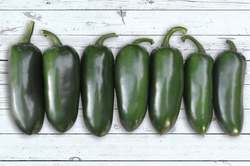
A grill master’s delight! At 2,500 Scoville units, this is the hottest pepper in this year’s pepper winners but it boasts extra large and very tasty jalapeno fruits that are perfect for stuffing, grilling or using in salsa. Emerald Fire produces gorgeous, glossy green peppers with thick walls that have very little cracking, even after maturing to red. Gardeners will appreciate the prolific fruit set on compact plants that resist disease better than other similar varieties on the market. Emerald Fire is a strong and vigorous hybrid jalapeno plant that sets a large amount of concentrated fruit. This high yielding X3R variety produces tasty extra large hot jalapenos that are great for fresh and canning uses.
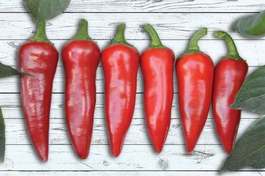
Most Fresno peppers are considered rather finicky plants that typically grow better in warm and dry climates. The fact that Flaming Flare is an AAS National Winner means it performed well in all AAS trial sites. The fruit is ideal for making chili sauces and the heat of that sauce will increase depending on how late in the season the peppers are harvested. Flaming Flare is an exceptional pepper that was sweeter tasting than similar Fresno types and consistently produced larger fruits and more peppers per plant. Yet another AAS Winner that culinary gardeners should consider for their kitchen gardens.
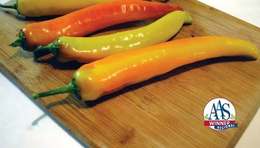
For banana or wax pepper lovers who desire a prolific and earlier harvest of delicious and spicy (650 Scoville units) fruits, Hot Sunset is for you. Large, healthy, vigorous plants are disease-free and produce tasty and attractive fruits all season long. The AAS Trial judges noted what a great taste this thick-walled pepper has, not like other hot peppers where all you get is heat. We think this tasty morsel should be featured on a TV cooking show where chefs compete to bring out the best in this goodie, whether it’s prepared fresh, grilled, roasted or pickled, it’s sure to win over even the most particular foodie!
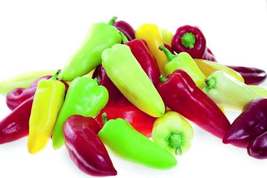
Look...in the garden! Is it an ornamental pepper? Is it edible? Yes to both! Now we can tell consumers that an ornamental pepper CAN be eaten and it tastes fantastic! It’s time for new terminology to describe this multi-purpose plant...how about an “Ornamedible?” Pretty N Sweet is just that: a sweet, multi-colored pepper on a compact 18” plant that is attractive to use in ornamental gardens and containers. Against the comparisons, Pretty N Sweet was earlier, more prolific (you can harvest weekly in peak season) and has a much sweeter taste with more substantial pepper walls to enjoy fresh or in your favorite pepper dish.
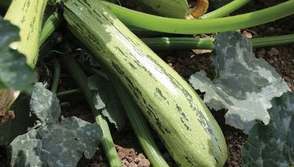
The beautiful dark and light green mottled exterior of this zucchini is more pronounced than other varieties on the market, which sets it apart and makes the fruits easier to see during a long and prolific harvest. Compact plants produce fruits earlier in the season and continue producing for three weeks longer than comparison varieties. During taste tests, the AAS Judges deemed the smooth flesh texture and sweet, mild taste much improved over other summer squash.
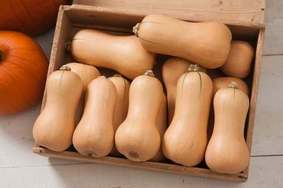
This adorable small-fruited butternut squash has an exceptionally sweet taste perfect for just one or two servings. Compact vines are space-saving for smaller gardens or those who just want to fit more plants into the space they have. This is another AAS Winners that is perfect for container gardens and will resist powdery mildew later in the season. Culinary tip: pierce the skin then microwave whole squash for about 12 minutes, cut in half, spoon out the seeds, and enjoy!
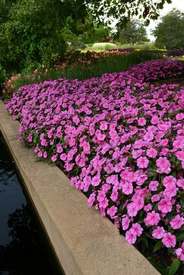
Impatiens Bounce™ Pink Flame PPAF 'Balboufink'
Bounce impatiens provides gardeners with shade garden confidence. Bounce looks like an Impatiens walleriana in habit, flower form and count, but is completely downy mildew resistant, which means this Impatiens will last from spring all the way through fall. Bounce Pink Flame boasts of a massive amount of stunning, bright pink bicolor blooms with tons of color to brighten your garden, be it in shade or sun. And caring for impatiens has never been easier: just add water and they’ll “bounce” right back! Available in plant form only.
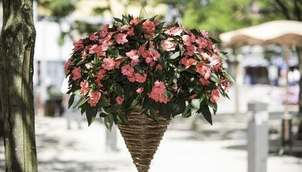
The truly unique genetic background of SunPatiens® Spreading Shell Pink delivers unsurpassed garden performance with season long, soft pink flowers that never slow down. Strong roots take hold quickly after transplanting and these impatiens thrive under high heat, rain and humidity. The AAS Judges loved these vigorous spreading plants that keep their shape all summer, plus, they do just as well in full sun as in shade. These low-maintenance plants are perfect for gardeners looking for Impatiens that are resistant to downy mildew. Available in plant form only.
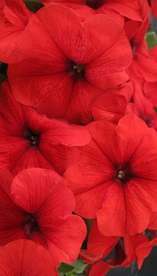
The Trilogy petunia series has a new color with this stunningly rich, vibrant red version! Trilogy petunias are known for their compact dome-shaped habit sporting large non-fading blooms throughout the season. The plants cover and recover themselves in upright blooms providing a constant mass of color in flower beds, baskets, and containers. Gardeners in high heat areas will appreciate the heat-tolerance of this variety and all gardeners will like how quickly Trilogy bounces back after a rain.
For growers, judges noted there was less need for PGRs and on the bench, the controlled growth habit meant tidier plants that were easier to separate and ship.
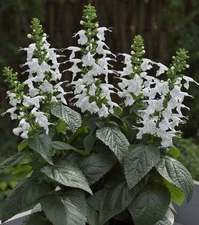
A third color in the popular Summer Jewel series, white brings a much-needed color to compact salvias. This dwarf sized, compact plant has a prolific bloom count throughout the summer. As a bonus, the blooms appear almost two weeks earlier than other white salvias used as comparisons. Judges noted how the bees, butterflies and hummingbirds loved the larger flowers, making it perfect for a pollinator garden. Because of the compactness and number of flowers, Summer Jewel White is great for large landscaped areas, as well as containers and small beds. Commercial growers now have an excellent compact white salvia coccinea and will appreciate the earliness, uniformity and excellent pack performance. (Ward Upham)
Bird Feeding
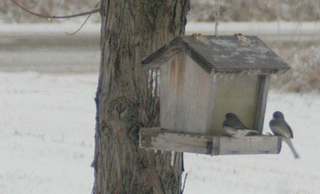
As you become more interested in bird feeding, you may want to use more than one feeder to attract specific species of birds. Following is a list of bird species with the grains they prefer.
- Cardinal, evening grosbeak and most finch species – sunflower seeds, all types.
- Rufous-sided towhee – white proso millet.
- Dark-eyed junco – white and red proso millet, canary seed, fine cracked corn.
- Many sparrow species – white and red proso millet.
- Bluejay – peanut kernels and sunflower seeds of all types.
- Chickadee and tufted titmouse – peanut kernels, oil (black) and black-striped sunflower seeds.
- Red-breasted nuthatch – oil (black) and black-striped sunflower seeds.
- Brown thrasher – hulled and black-striped sunflower seeds.
- Red-winged blackbird – white and red proso millet plus German (golden) millet
- Mourning dove – oil (black) sunflower seeds, white and red proso plus German (golden) millet.
Extended cold periods can also make water unavailable. A heated birdbath can be a tremendous draw for birds during times when all other water is frozen. Energy use is usually less than what most people expect IF the heater has a built-in thermostat. If you would like more information, Chuck Otte, Agriculture Extension Agent for Geary County has a series of backyard birding guides at http://gearycountyextension.com/NRMW.htm (WardUpham)
Growing Your Own Firewood
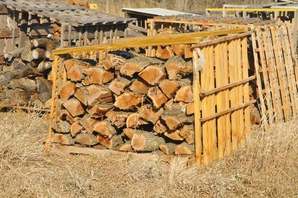
Plant species is an important consideration as not all trees have the same density and therefore heat value. The greater the dry weight, the better. The highest value for trees commonly found in Kansas is Osage Orange (Hedgeball tree) at 4,800 pounds per cord. Osage orange has a gnarly growth habit and a nasty set of thorns. This species also sparks which isn’t a problem in a wood-fired boiler but certainly would be in an open fireplace.
Black locust is next with 4,200 pounds per cord. Black locust is a fast grower and also has excellent burning qualities and makes a nice bed of coals. However, it is hard to split, suckers, and has some relatively small thorns, especially on young trees. Bur oak and red oak come in at 3,800 and 3,500 pounds per cord respectively but are not fast growers. Mulberry, however, has the same weight as red oak but grows more quickly. Silver maple has less heat value (3,000 pounds per cord) but is a very fast growing tree.
Black locust would be my first choice for this purpose though you may wish to plant rows of several species. However, each situation is different and another species may work better for you. So how do you set out your plantation? Dr. Wayne Geyer, one of our retired forestry professors, has done many woody biomass studies over the past 35 years. Following are some recommendations that have come out of his studies.
- Plant locust a few rows in from a field edge to reduce suckering in the field.
- Plant on a close spacing, 4 to 6 feet apart. This maximizes yield and reduces side branching.
- Control weeds the first two years.
- Harvest every 5 years, most trees will resprout and can be reharvested.
- Plant about 1 acre per year for 5 years if you wish to supply the majority of the firewood needed to heat your home. (Ward Upham)
Bringing Houseplants Down to Size
Choose wood that is about 1 year old. Older or more immature wood often roots poorly, if at all. Any place on the stem that is of the proper maturity can be used, but a convenient location is often about 12 inches from the tip. Following are the steps required for air-layering:
- Leaves should be removed around the area to be air-layered.
- Wound the stem. This can be done by making a slanting cut upward, an inch or more in length and halfway through the stem. Place a portion of a toothpick in the cut so it cannot close and heal. If the stem is seriously weakened, use a stick “splint” to prevent breakage. Another method that works well is to strip the bark completely around the stem in a band ½ to 1 inch wide.
- Apply rooting hormone to the wounded surface of the cut or the stripped portion of the branch.
- Pack a baseball-sized wad of moist, unmilled sphagnum peat moss around the wounded area so it forms a ball. This is where new roots will form. It is important to use the long, stringy unmilled peat moss rather than the more common milled material so peat moss does not fall away from the stem when released. Even unmilled peat moss may need to be secured with string to keep it in place.
- Wrap the ball of sphagnum peat moss with clear plastic wrap. Be sure to use enough wrap so that the plastic overlaps and prevents the ball from drying out. Secure the top and bottom edges of the wrap closed with electrical tape, string or other convenient fasteners. Roots may appear in as little as a month though it may take much longer for the plant to be ready for transplanting. Check periodically to be sure peat moss remains moist. Water if needed. When roots have filled the peat moss, the plant is ready to be severed from the parent and transplanted. (Ward Upham)
Contributors: Ward Upham, Extension Associate
 RSS Feed
RSS Feed
